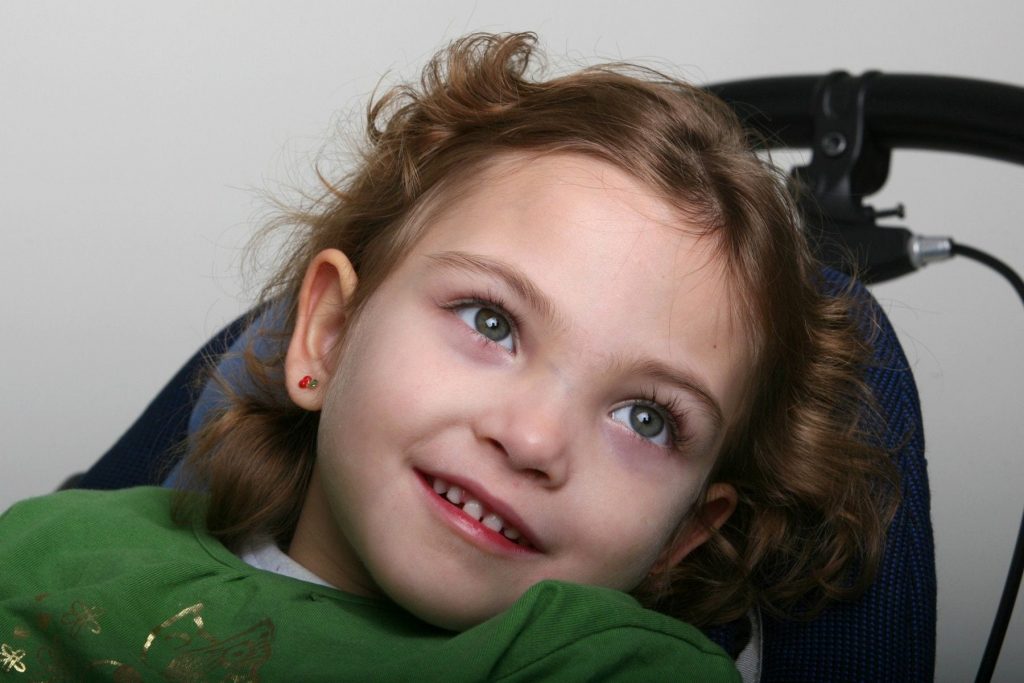
Among the many disorders that a girl can suffer is the so-called Rett syndrome, a disease that was detected in 1966 by the Austrian doctor Andreas Rett - hence its name - and is characterized by increasing deterioration linked to a failure in neurological development.
Although it can affect males, Rett Syndrome occurs almost exclusively in girls or older women. It is a neurological disorder that begins in childhood And it gets worse as the years go by. The severity of the case can vary from individual to individual, although what they all share is that initially the growth and development of the girl or boy is normal until the first symptoms begin.
The root of the problem

El Rett syndrome is caused by different mutations, which can range from defects to alterations, in the MECP2 gene, a gene found within the X chromosome. According to research carried out in 1999, this gene in turn controls the functions of others and is associated with the synthesis of the methyl cytosine binding protein 2 MeCP2, a protein that affects the body's biochemical system and when it does not work correctly, it signals other genes to stop producing their own proteins.
By altering this initial gene, it causes a general alteration of the system and thus other genes are activated at times when they should not, thus generating proteins for others, which result in a global alteration of the organism and the consequent problems of neurological development.
So far, almost 80% of children diagnosed have the mutation in the MECP2 gene, although in the rest of the cases the appearance of the syndrome would be associated with mutations in other genes not yet identified or other parts of the same gene .
Unlike other disorders linked to genetics, Rett syndrome is not inherited but occurs by a random mutation. Only 1% of the cases registered to date are due to transmission from generation to generation.
Characteristics and stages of Rett Syndrome

Although we said that at first the children with Rett Syndrome present normal development, there comes a time when the first symptoms, which can be both physical and mental.
The most frequent in the initial stage are:
- Hypotonia or loss of muscle tone
- Inability to use hands and speech voluntarily.
- Problems crawling or walking
- Loss or decrease of eye contact
- Compulsive hand movements (such as rubbing or washing hands)
- Apraxia or inability to perform motor functions, thus altering all movements of the body.
- Autistic behaviors
In addition to the symptoms mentioned, other symptoms of Rett Syndrome can be:
- Sleeping problems
- Walking on the balls of your feet or with your legs wide apart
- Chewing difficulties
- Grinding or gnashing of teeth
- Seizures
- Stunted growth
- Cognitive disabilities linked to learning
- Difficulties in breathing (apneas, aspiration of air, hyperventilation).
El Rett syndrome presents 4 stages specific: that of Premature start, which begins between 6 and 18 months of age and is difficult to distinguish as symptoms can be quite imperceptible and then stage II or Accelerated Destruction Stage, which occurs from 4 year to XNUMX, a stage in which, especially, a rapid or gradual evolution of the motor symptoms of the hand and speech is recorded. The next stage is the Stabilization or pseudo-stationary stage (2 to 10 years) and can take years to finally enter stage IV, the Late Motor Deterioration Stage, which lasts for years or decades and presents reduced mobility, muscle stiffness, spasticity and dystonia, among other symptoms.
Diagnosis and treatment

While there is no cure for Rett Syndrome, treatment is concerned with addressing symptoms as they occur from a multidisciplinary approach. There is medicine designed to control symptoms, from breathing difficulties to motor difficulties to seizures.
La occupational therapy, physical therapy and hydrotherapy They help the patient to increase the ability to be autonomous while helping to prolong mobility. The use of splints, splints and other elements that help them control movements and problems is also common.
Despite the prognosis, most people with this disease live to adulthood, although life expectancy is unknown because it is a rare syndrome.